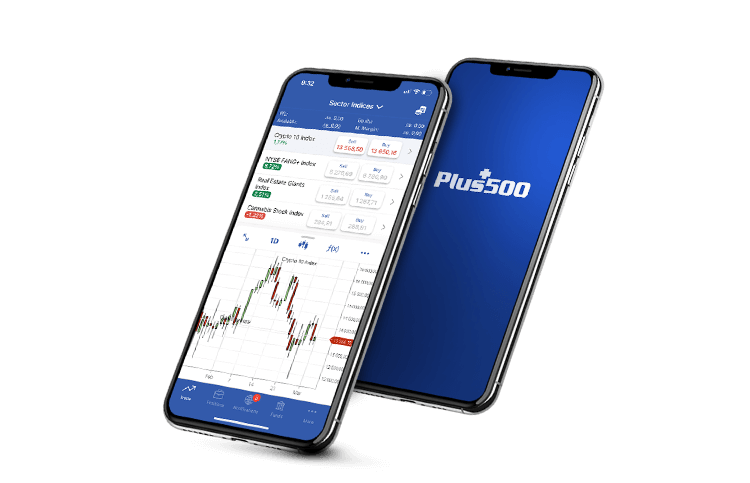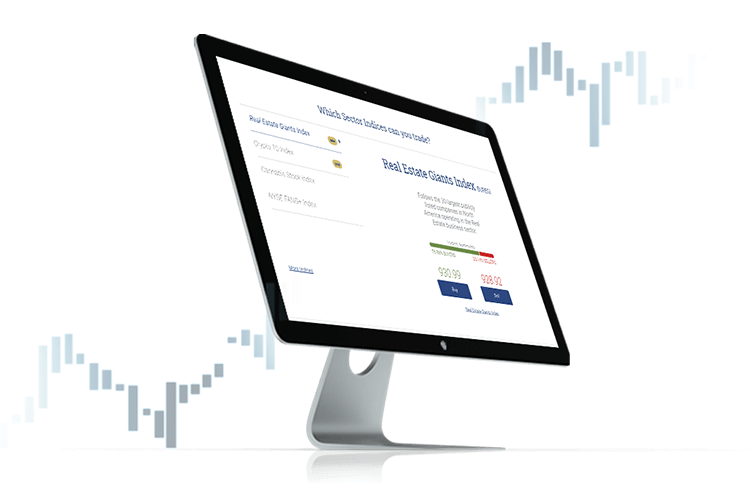What Are the Most Traded Indices?
Out of the numerous market Indices available for trading, there are a few that have consistently made headlines and are considered the most popular and most followed Indices among traders. Many of these Indices can be found on Plus500’s trading platform.
Types of Stock Market Indices
There are many market Indices in the world; the number of US Indices alone exceeds 5000. Stock market Indices specifically can be segmented into five fundamental categories according to coverage, two of which are available on the Plus500 platform.
- Country Indices: these types of Indices track the course of nation-specific Indices, and by default, are a reflection of the market sentiment of a given country. Examples of country Indices include, but are not limited to the DAX40 which tracks 40 of Germany’s blue-chip stocks, the Nikkei 225 which gauges 225 stocks of Japan’s top-tier companies, and more.
- Global Indices: these Indices cover the worldwide market moves and are international. Global Indices include the S&P Global Index, among others.
Other Indices include regional Indices, exchange-based Indices, and sector-based Indices.
Popular Indices
Out of the many types of Indices, there are some that are considered the most popular. Some of Plus500’s most popular Indices CFDs include:
- S&P 500 - This index, which was first introduced in 1957, tracks the movement of 500 US large-cap companies from various sectors ranging from real estate to healthcare and more. The S&P 500 index is one of the most popular Indices worldwide which includes some of the biggest companies worldwide like Apple and Netflix, among many others.
- Nasdaq-100 (US Tech 100) - introduced in 1985, this large-cap index includes and tracks 100 large non-financial companies listed on the Nasdaq Stock Market. The Nasdaq 100 contains the most actively-traded companies belonging to the industrial, retail, transportation sectors, and more. While it comprises many American companies like those listed on the S&P 500, it also contains Chinese companies that are excluded from the S&P 500 like technology companies Alibaba and Baidu. Furthermore, since this index is considered tech-heavy, many tech giants such as Nvidia, Meta, Google, Amazon are tracked on it.
- FTSE (UK 100) - this index, otherwise known as “Footsie,” tracks 100 blue-chip, large-cap companies listed in the UK and was launched in 1984. It includes companies from various sectors and is considered a reflective measure of the overall economic health of the UK and many giants like Rio Tinto, AstraZeneca, and HSBC are tracked on it.
- DAX 40 (Germany 40) - previously known as Germany 30, it follows Germany’s top 40 companies according to liquidity and market capitalization. The index was created in 1988 and it tracks some of the largest companies traded on the Frankfurt Stock Exchange (FSE), like car manufacturer Volkswagen, multinational conglomerate Siemens, and more.
- USA 30 (DJIA) -this index is considered one of the oldest Indices still in use today, and it was founded in 1896. The DJIA tracks 30 US blue-chip companies from the financial and industrial sectors. Companies like the world’s largest aerospace corporation Boeing and big banks like Goldman Sachs and JPMorgan Chase, among others are tracked on this index.
- Nikkei 225 (Japan 225)* - activated in 1950, the Nikkei 225 tracks and measures 225 publicly owned and large Japanese companies traded on the Tokyo Stock Exchange (TSE). The companies it measures belong to different sectors. Companies like Toyota, Sony, and Softbank comprise this index.
- Hong Kong 50 (China 50) - this index was established in 1969 and tracks the 50 largest companies traded on the Hong Kong Exchange (HKEx). It includes companies like Tencent and Bank of China among other large companies.

Illustrative prices.
Unique Indices
While some of the most popular traded Indices in traditional markets follow whole economies, there are also industry-specific Indices that track the progress and movements of a specific sector. These can be telecommunications, technology, cannabis, and even cryptocurrencies.
Plus500 offers exclusive sector-specific Indices. These Indices are compiled using real-time data, giving investors up to the minute valuations.
These include:
- Cannabis Stock Index - BGCANG follows the cannabis Industry’s top performers like cannabis pioneers Aurora Cannabis and Canopy Growth.
- Crypto 10 Index* - Crypto 10 follows and measures the performance of the top 10 cryptocurrencies in the market, including Bitcoin, Ethereum, Cardano, Litecoin, Dogecoin, and more as reported by BITA Data.
- Global X Lithium & Battery Tech - First initiated in 2010, this index tracks between 20-40 global manufacturers and miners of lithium and battery metals. A prominent example of such companies is EV giant Tesla and American chemicals manufacturer Albemarle.
- Real Estate Giants Index - BUREGI follows the 30 biggest publicly-listed companies in North America operating in the real estate sector according to BITA like American Tower Corporation and Crown Castle International.
- VIX Volatility Index - Based on CBOE’s ‘fear gauge’, this index follows S&P 500 futures contracts and is considered to be of a high value to traders as it gauges market volatility, fear, risk, and trader confidence. This index usually provides traders with a 30-day ahead analysis of market volatility.
Beyond trading, investors may follow Plus500’s unique Indices CFDs to gain a grander perspective of sector movements and fluctuations within these sectors, as the market holds trading opportunities regardless of the direction it moves. Savvy investors might use all tools at their disposal to understand the markets and try to predict future trends.
*Product offering is subject to operator.

Illustrative prices.
Stock Indices in Financial Markets
Stock indices are a compilation of publicly traded stocks, allowing investors to gain a glimpse into a whole market or sector. Plus500 offers its traders the opportunity to trade contracts on the movements of some of the most popular indices without requiring them to purchase the underlying assets.
There are some differences between trading in traditional markets and trading using CFDs. In traditional markets, whole market funds are regularly pooled into mutual funds. In these funds, growth can be slow and assets are accompanied by fees, along with conditions for how and when to sell these shares. In addition, all trades are completed at the end of each trading day, meaning that a trade placed in the morning will have to wait for the closing bell to be closed at the new price.
In contrast, CFD trades can be executed at any time during trading hours. What’s more, traders can benefit from the ability to recognize personal gains even when an index drops since short selling is also available when trading CFDs. However, it is important to remember that trading CFDs carries a certain degree of risk and traders can also incur heavy losses. When trading CFDs, traders do not own the underlying asset.
What to consider when picking an index
Indices are unique trading tools because their value fluctuations are directly influenced by the rise and fall of other instruments. Just as traders research the fluctuations and factors for shares or commodities, it is important to weigh all the factors that may move an index in either direction, including various companies and sectors.
Factors that can affect indices include, but are not limited to, political events, trader sentiments, and unemployment reports. These are events which may move an Index in a specific direction, so even if the biggest company in the Index sees a big jump, the index value as a whole may drop due to the movements of the other companies included in the Index.
*Product offering is subject to operator.